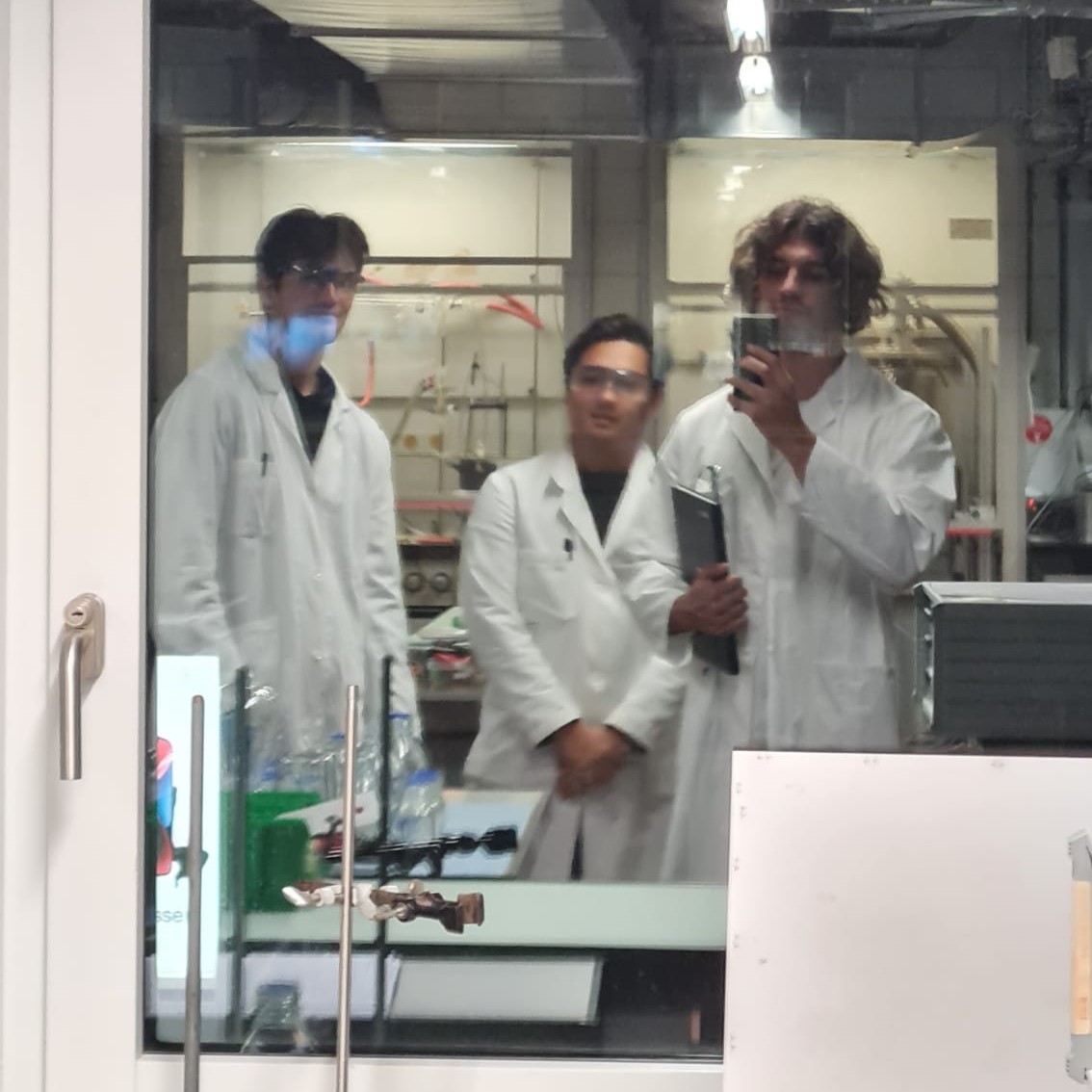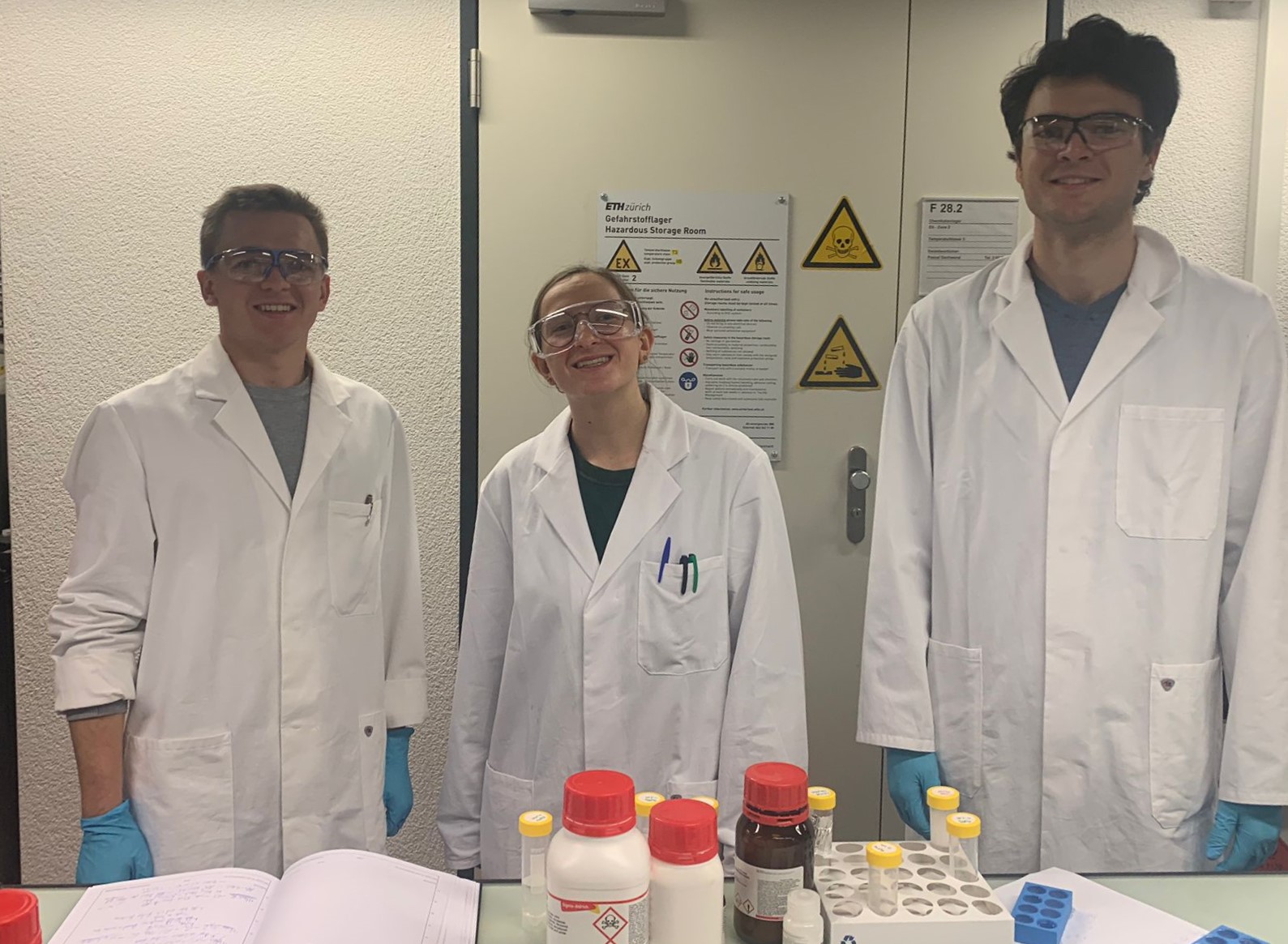Our Teams
To achieve as much as possible in our year on the project, we have divided our eight team members as efficiently as possible. This division allows us to be very focused on different tasks in our project and yet not neglect any important task. Specifically, we have divided ourselves into three sub-teams: the synthesis team, phantom team and testing team. Nevertheless, we all meet weekly in order not to neglect the collaboration between the teams and also to inform each other about the latest developments.
Synthesis Team

The synthesis team is working on the heart of our project: the contrast agents. These will eventually be injected into the blood, accumulate in the tumour and greatly improve imaging. These three properties have already been achieved by researchers and our synthesis team is combining them in one contrast agent. Our synthesis team achieves this combination through complex chemical processes and flawless precision in working with the chemicals. They are supported by Prof. Herrmann and her team in the NSEL Lab.
Phantom Team

The mission of the Phantom Team is to create a realistic optoacoustical test environment that resembles human breast tissue as much as possible. In order to do so, they are experimenting with different tissue mimicking materials (TMMs) to find the optimal mixtures for the different structures present in tumorous breast tissue. In a second step they will stabilize a live tumour to have a “real” in vitro testing environment. The overall job of the Phantom Team is to facilitate the work of the Testing Team so that they can test the particles in the most efficient way and hence obtain conclusive results.
Testing Team

The Testing Team, as the name suggests, tests the nanoparticles in the phantom. They are responsible of using the near infrared laser to collect data and then reconstruct images according to the data. Their goal is to detect and pinpoint where the nanoparticles are. They also need to determine if the nanoparticles aggregate in the tumor, to do this, the team needs to do spectral unmixing. Spectral unmixing is to determine the type of tissues that they have in the images. Once they have done all of this, they give feedback to the two other teams on how they can improve and reach closer to the project's goal.